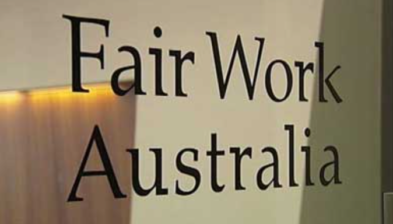Fear for SMEs as employers could be up for $8 billion in leave payments to casual workers - Smart Company
By Alan J. McDonald

Australian employers could be forced to fork out as much as $8 billion in payments to casual workers looking to claim annual leave benefits, according to an analysis of a recent Federal Court decision by the Australian Industry Group.
The Ai Group has found more than one million casual employees could be entitled to annual leave back payments, after a Federal Court decision last month established precedent for casuals working regular shifts to be able to access leave entitlements.
The employer group believes the potential cost impact of the court’s decision ranges from $5.7 billion to $8 billion, based on analysis of data from the Australian Bureau of Statistics and the Household Income and Labour Dynamics (HILDA) survey, covering at least 1.6 million casuals who work on a regular, ongoing basis.
It is feared as many as 2.2 million casual employees may be eligible to claim back payments, which is up to 85% of all casual workers.
There is further concern that small businesses are particularly vulnerable because smaller firms are more likely to employ casuals.
Analysis of HILDA data undertaken by economist Geoff Gilfillan earlier this year found casuals account for around a third (33%) of workers employed by firms with one to 19 employers.
The Ai Group undertook the analysis after the Federal Court ruled in favour of a casual truck driver employed by labor-hire company Workpac at a Rio Tinto mine in August.
The employee was terminated by Workpac after four years in a casual position, and in a subsequent court action, claimed he felt his work was akin to regular employment because he worked 12.5 hour shifts on a “seven days on, seven days off continuous roster arrangement”.
The worker claimed he was owed $21,000 in annual leave, alongside almost $7,000 in interest, while the company argued the worker was a casual employee under the Fair Work Act.
Based on this the ruling, workplace lawyer Trent Hancock believes casual employees across the country will begin to file their own claims for leave entitlements.
“This will change the way that businesses consider casual employment,” he told SmartCompany.
Hancock, a principal lawyer with law firm McDonald Murholme, says some businesses have mischaracterised the nature of their relationship with casual employees.
“Those employers that have mischaracterised permanent employees as casual employees will be in trouble,” he contends.
In the Workpac case, the court held the term ‘’casual employee’’ has no precise meaning in the Fair Work Act.
There is now concern, as expressed by Ai Group on Wednesday, that casual employees will “double dip”, claiming both the benefits of casual loading and leave entitlements.
Depending on individual industry awards, casual employees are entitled to additional loadings. For instance, workers under the Hospitality Industry (General) award are entitled to a 25% casual loading.
However, Hancock says in many cases he’s come across casual loadings are lumped in with hourly rates.
“[In the Workpac case] it’s not clear he was paid a casual loading at all, it was simply a lump sum hourly payment,” he says.
Hancock’s advice to small business owners is to ensure casual loadings are separately identified with employees, rather than lumped into wages, so that it can be clearly shown that the loading payments offset other entitlements.
Ai Group chief executive Innes Willox has called on Parliament to make urgent changes to the Fair Work Act to clarify the nature of casual employment and protect employers against compensation payments.
“Unless Parliament acts quickly, the litigation likely to result from the decision will lead to a big increase in business insolvencies,” he said in a statement.
Willox said the court considered irregular work patterns, uncertainty, intermittency of work and unpredictability as typical characteristics of casual employment.
Hancock believes growing casualisation in the workforce has prompted the need for a broader discussion about the nature of casual work, although he does agree that there is scope for clarifying the nature of casual employment in the Fair Work Act.
“It’s a widespread issue, the increasing casualisation of workers and inappropriate casualisation means that there’s a great number of mischaracterised employees,” he says.
Reference: “Fear for SMEs as employers could be up for $8 billion in leave payments to casual workers”, Smart Company, Thursday 13th September 2018.
-
 High Uni Fees but Academics Underpaid
High Uni Fees but Academics Underpaid -
 Reserve Bank interest rake hike and job losses
Reserve Bank interest rake hike and job losses -
 Labour shortages, inflation, recession looming and workplace disputes
Labour shortages, inflation, recession looming and workplace disputes -
 Paid family and domestic violence leave is to be introduced in Australia: here’s how it affects you
Paid family and domestic violence leave is to be introduced in Australia: here’s how it affects you -
 Virtual assistants; mumpreneurs’ secret weapon
Virtual assistants; mumpreneurs’ secret weapon -
 McDonald Murholme guide to the Fair Work Act – The Australian
McDonald Murholme guide to the Fair Work Act – The Australian